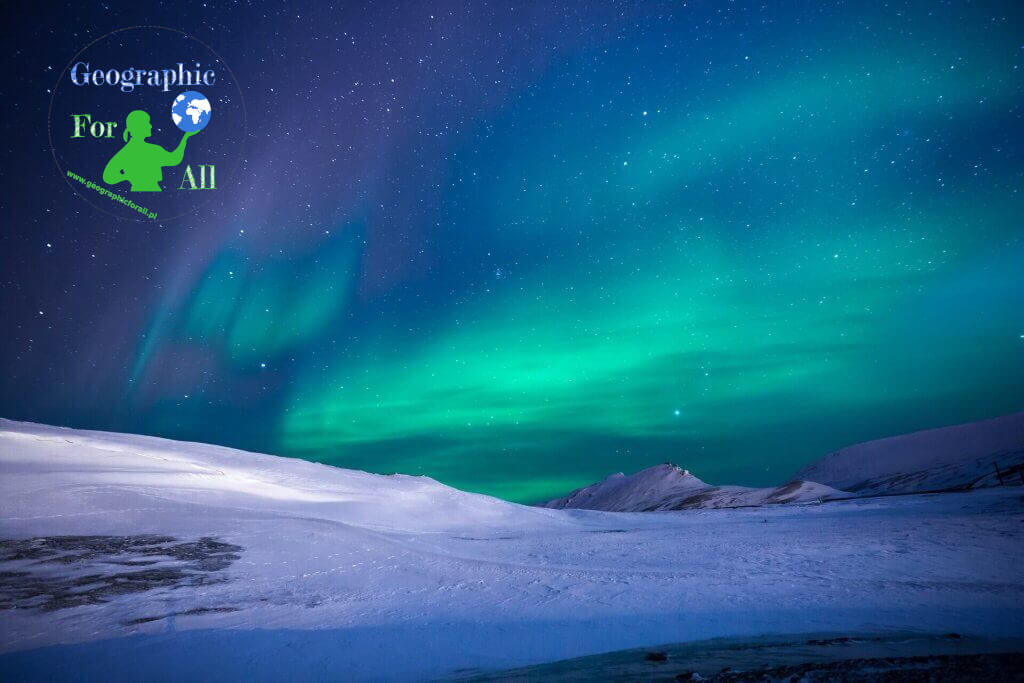Magnetosphere
Magnetosphere is the area of magnetic forces of a given celestial body. In our solar system, this field is produced by: the Sun, Earth, Mars, Jupiter, Uranus, Neptune and Saturn. In the case of our star, the magnetosphere is very variable and intensifies its impact every 11.4 years on average.
If the Earth had only its magnetism it would be a bipolar sphere spanning about 60,000 kilometres. But this ball is attacked by solar wind, which flattens and extends on the opposite side of the planet up to several million kilometres. What’s more, thanks to the magnetosphere, some of the alpha radiation, atoms and their particles do not reach the Earth’s surface. What is not reflected stops in the so-called Van Allen Belts – external at an altitude of about 12-25 thousand km and internal at an altitude of 3.5-5 thousand km. These are spaces protecting the Earth. The poles are less protected, which is why the phenomenon of auroras , i.e. the glow of atmosphere particles colliding with solar radiation appears at higher latitudes.

Polar lights
Auroras can be seen above 50 degrees latitude, although they are best seen behind the Arctic Circles. In the southern hemisphere, they are called Aurora borealis, and in the southern hemisphere, they are called Aurora australis. They are formed in the ionosphere at an altitude of about 100 km. Their colour depends on the intensity of the solar wind, as well as on the gas – oxygen gives red and green auroras, nitrogen is responsible for purple and burgundy phenomena, and hydrogen and helium for blue and purple. There are also yellow and white.

![Aurora australis, By NASA [Public domain], via Wikimedia Commons](https://geographicforall.com/wp-content/uploads//2016/08/Aurora_australis_20050911.jpg)

The main perpetrator of Earth’s magnetism is Earth’s core, or rather the movements of liquid mass, which under the influence of rotational motion create spirals and thus a dipole magnetic field. This field is deviated from the earth’s axis by 11.5 degrees. And while on a normal trip we don’t have to make corrections on it use a compass, the polar explorers navigate with a calculator in hand (joke) 🙂
For fans of conspiracy theories, it should be added that the planet’s magnetic field is weakening and will disappear in about two thousand years, the poles will change places, which will cause natural disasters, tsunamis, earthquakes and other cataclysms, after which it will politely begin to grow. I do not penetrate these black visions, but changes in magnetic field strength are a natural phenomenon. What’s more, you can try to measure such phenomena. The magma freezing in the rift valleys freezes and magnetizes according to the current field distribution. After the poles invert, they magnetize again according to the field, but thus inversely to previous layers. Thus, at the bottom of the oceans, a „zebra” is formed, which propagates parallel to the rift of the alternating bands magnetized in unison and vice versa to the Earth’s field. This method is not entirely correct, because studies on continents show completely different magnetic pole routes, what is more, a different path has been marked on each continent 🙂
![Wędrówka bieguna magnetycznego By Cavit [CC BY 4.0 (http://creativecommons.org/licenses/by/4.0)], via Wikimedia Commons The magnetic pole wandering, By Cavit [CC BY 4.0 (http://creativecommons.org/licenses/by/4.0)], via Wikimedia Commons](https://geographicforall.com/wp-content/uploads//2016/08/Magnetic_North_Pole_Positions_2015.svg_.png)


0 Comments for “Magnetosphere and auroras”